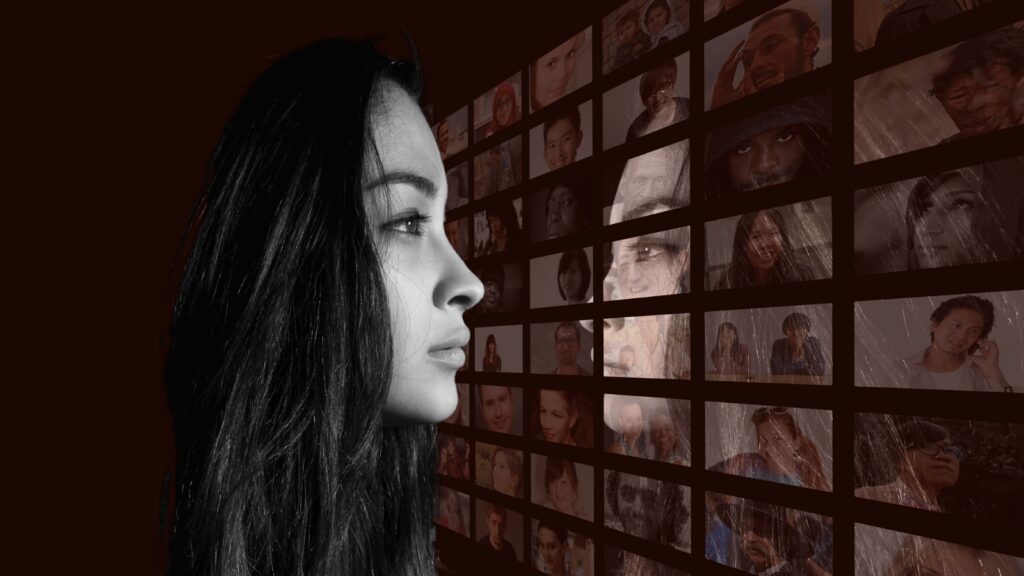Sexualising 12 years old women : online grooming and sexualisation of young girls happens everywhere, possibly at an increasing rate. Here’s what one girl has decided.
In a previous article, I spoke of a couple of movie/TV series tropes that are somewhat questionable in their depictions of women. A similar phenomenon can be found (almost specifically) in teen dramas, where adults portray underaged characters on screen. This is, of course, a more efficient and ethical way of casting, rather than overworking a minor. However, this gave writers and directors the “permission” to sexualize these characters regardless of age as, legally speaking, the actors shown on-screen are, in fact, of age. Thus, it creates this unrealistic body expectation for youth watching these media pieces while also normalizing the sexualization of real-life children in society. It is most prevalent in Western media, but Asian countries (I’m especially looking at Indonesia here) still commit the crime of overly “adultifying” teenaged characters, making them appear more sexual and psychologically mature.
“And how does this relate to real life?” You ponder. Well…
RELEVANT SUSTAINABLE GOALS

GROWING UP QUICK
When news broke out that Danielle Cohn and Danielle Bregoli (also known as Bhad Bhabie) started their own OnlyFans account at ages 18 and 15, respectively, people were not happy, to say the least. This disapproval of their decisions manifests itself in the form of insults and slut-shaming towards the two. After all, how could people not think they are all the profanities thrown at them when they choose to present themselves in such a way?
I have come to realize from this situation that this is not too far off from the infamous case of Doug Hutchison and Courtney Stodden back in 2011. Hutchison, who was 50 at the time, had married his grooming victim—Stodden, who was 15 at the time. And my god, did the public eat that up…


2011 was hungry, and Stodden was easy prey. Because who are they but a dumb 15-year-old blonde who thought a relationship with a 50-year-old would work? Few criminalized Hutchison for his abusive crime towards the adolescent victim and instead focused on shaming the child. Even to this day, many still point to Stodden’s Instagram content that is sexual in nature. In a recent interview, they revealed that there were moments where they had felt unsure, uncomfortable, and disrespected by their then-husband. Looking back at how the two appeared on camera, however, it is difficult to believe that Stodden had been played the whole time. There were even multiple interviews—both with Courtney alone and with the couple—where they defended their relationship, saying they were happy and in love.
Even when the public was dogpiling them (and especially on the child), they stood their ground, with Stodden even defending themself more sternly. Tabloids and co-stars alike at the time called Stodden profanities and slut-shamed them. Yet, it still could not free the child victim from the shackles that are their abuser.


It wasn’t until 7 years later that Courtney Stodden finally divorced their abuser and found freedom, now focusing on their own career and healing.
GROOMING MADE EASY
As of July 2019, Instagram has amassed roughly one billion users worldwide, with almost 30% of its users being 18-24 and 7.5% of them aged 13-17, according to Statista. Research also found that internet users across South-East Asia often spend more extended time online every day compared to the global average. For example, Indonesia has roughly 60% of its children accessing the internet through mobile devices. In contrast, the Philippines has 50% of its 44 million internet users being children aged 17 years old and below. In Thailand, 58 percent of children aged six to 14 years are using the internet. With no practical way of protecting children online other than through parental intervention, many kids nowadays can fall victim to cyberbullying and online grooming. The latter may be even more complicated than many initially thought.
In 2003, Rachel O’Connell released a paper on online grooming and cyber exploitation. Among other things, the report highlighted the usual pattern in online grooming, which includes; the friendship forming stage to get to know the child and build a foundation for trust; the relationship comprising step where the adult will begin to ask more personal questions to the child; the risk assessment stage which refers to the scene when the adult will start gathering information that can aid them in assessing the probability of them getting away with their action; the exclusivity stage makes the child victim feels special through notions similar in nature to “other people wish they’re you right now,” or “I don’t usually do this to other people, but you’re unique,” etc.; and finally, the sexual stage which is when the adult perpetrator would urge the child victim to do sexual services for them, often under the guise of teaching them the ropes and trying to educate them.
Of course, O’Connell’s study focuses on one-on-one interactions. But imagine all these stages hitting a single child all at once, all from different people, grooming them not into an exclusive relationship, but a life of sex work at an early age. Not only that, where Courtney seemingly had only one abuser they need (and can) separate themself from, how about today’s young Instagram girls?
HINDSIGHT IS 20/20
It was difficult to comprehend that Courtney had been groomed into their relationship with the opportunistic man. Yet, how could people not see it when Courtney themself did not seem to be in any kind of distress? The thing is, when you have been unknowingly manipulated by people you trust, you are bound to believe them and, as a result, change your behaviors accordingly. Think of it this way: an offender would groom children into sexual acts by undermining their weight and praising the child for engaging in such activities. The child will then be “used to it” and—according to UNICEF—will have a shift in attitude and perception towards the nature of sex.
Long-term effects punish these children even more as numerous studies have found higher tendencies of traits such as self-blame, anxiety, shame, depression, denial, and sexual and relationship problems in victims of childhood grooming. Since trauma treats its prey differently in each case, it’s not unlikely to consider worse fates for others. Children in the spotlight like Bregoli, Cohn, and even Stodden at their time have it even worse! Numerous parties catalyze the process of grooming, earning their trust quicker and exploiting them sexually for longer.
Although the number has been declining through the years, South Asia continues to have the highest rates of child marriage worldwide as of 2017, with a chilling number of 45% of women aged 20 to 24 years old today having been married before the age of 18. It’s even more heartbreaking to know that in that sum, almost 1 in 5 girls wed are below the age of 15. Some may argue that it is simply the culture to treat girls as more mature, but it isn’t unlikely to believe that this is a mere grooming tactic.
SECURING CHILDHOOD
Girls are getting their childhood stolen from them without realizing it and are taking the blame for it. Children famously (or infamously) known across the digital realm have presented them with groups of people grooming them into growing up quicker than they should, praising them for it and enabling the behaviors, making it so even harsh criticisms with genuine good intent are brushed aside as mere hate. People have always been more open to demonizing young girls for things they are actually a victim of. We’ve seen it before with Courtney Stodden, and we see it happen a lot to this day with our Danielle Bregolis and Danielle Cohns. There is, of course, no right way to “act your age” since the environment we grow up in is in a constant state of change, and as such, I am under the belief that you cannot blame a child for not acting their age. It is the environment and circumstances they are under that must be criticized instead.
By ripping children of their much-deserved childhood, we not only desensitize them of the horrifying ordeal of being wed or having sexual experiences at such a young age, but we also desensitize ourselves. Across Asia (and admittedly almost everywhere else in the world), young girls have been expected to behave more maturely than the boys, having to watch how they dress and how they sit as to not appear sexual as well as having been planted the role of a maternal figure at an early age. The over-sexualization of young girls and their general adultification persuade children and us alike that girls are more mature than they let on. When in reality, our society has been groomed into believing that.
As easy as it may seem to criticize girls for being “too grown” or for not behaving their age, perhaps it is best we take a step back and see what exactly prompted them to act in such ways and focus our energy on dismantling that instead. Believe it or not, children nowadays still deserve a good childhood.
Also Read :
Toxic Femininity : How Patriarchy Pits Women Against Each Other



